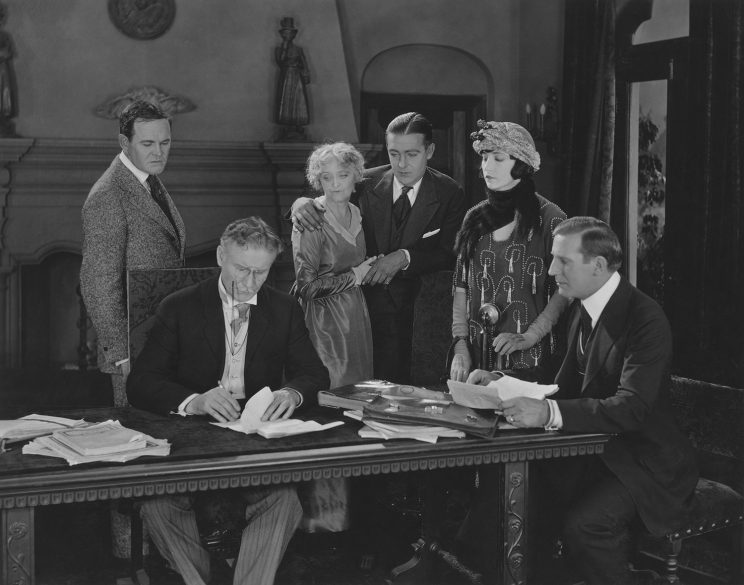
I have, as a venture capitalist and adviser, worked with a large number of privately-owned companies. A typical task for a venture capital investor in an entrepreneurial, owner-led company is to drive the professional and personal development of key people and, in parallel, carry through needed replacements of top tier managers. I will in this blog post share my experiences of the replacement of the CEO in owner-led companies.
When using the phrase “owner-led company,” I here refer to a privately owned company (not listed) in which one or several principal owners have leading positions in the business.
In many family companies, for example, the founder may be the primary shareholder, a dominant entrepreneur, who has a leading operational role. He or she may have not only one (1) management position but several; for example, holding the CEO position and in parallel being the director of sales and the director of R&D.

The replacement of the CEO in an owner-led company is a challenging and delicate process. A successful exchange of the CEO may become a positive and value-creating development of the business. If the new CEO comes from outside of the company, he or she may inject new ideas, new ways of thinking, and a refreshed leadership style, which in turn becomes a strategic lift for the business. On the contrary, an unsuccessful replacement of the CEO will have an adverse impact on the business and the organization, which may lead to decreased growth and destruction of shareholder value. An unsuccessful CEO replacement will surely give the principal owners, the board of directors, and top management severe issues to address.
A venture capital investor’s ultimate goal with an investment is, after a certain number of years, to capture values created in the business. To maximize shareholder value, the investor, therefore, strives to make the company independent of its principal owner(s) and founder(s). If one of the main owners holds the position of CEO, a change of the CEO may be needed and completed in sufficient time before the exit.
The examples I share in this blog are taken mainly from my career with venture capital and private equity investments in privately-owned companies. However, the challenges when replacing the CEO apply to most situations in owner-led and entrepreneurial driven businesses, particularly in those where a principal owner holds the CEO’s role. The risk that an exchange will fail is even higher if you need to find an external solution versus an internal promotion or generational shift.
Five replacements
I was during one single year involved in five different investments where the main owners and the board of directors in the companies agreed to replace the CEO through external recruitment or an internal promotion. All five companies were successful entrepreneurial driven growth businesses, and in all of them, one of the founding shareholders had the CEO position. The businesses were at different strategic breakpoints, and a more structured and delegated leadership was deemed necessary. A replacement of the CEO was, therefore, a logical step in the businesses’ development.
We carried out, in all companies, an extensive search process, and we had no problem in finding excellent candidates who looked for new challenges in their careers and were enthusiastic to assume a new CEO role.
40% success rate
After one year, we could conclude that more than one-half of the CEO replacements had failed. Three of the five CEOs had either decided to resign or were dismissed by the board of directors. In only two of the companies, the replacement of the CEO was successful.
The cause of the three failed recruitments was not that the principal owners and the board of directors had made a poor search and hiring process. First of all, replacements were in line with the plan to bring the businesses to the next strategic level. The recruitment processes were all conducted according to the textbook with clear requirements and specifications, all in the full agreement between principal owners, the board of directors, and the exiting CEO. In all five cases, we also used respected, well-recognized, professional search firms. We were able to attract excellent candidates, and we made our final selections from a pool of talented, high caliber candidates with the consensus and full agreement of among all major stakeholders, including key employees who reported to the CEO.
However, the main difference between the two successful replacements and the three failed replacements was that the new CEO came from inside the business. In one of the companies, the director of manufacturing was promoted, and in the second company, the director of marketing and sales was offered the CEO position. The two new CEOs were independent of the principal owners and founders, and both of them had been externally recruited a couple of years prior.
 In the three unsuccessful cases, the main cause of failure was emotional in nature. The board of directors and the other involved parties were too rash in carrying out the replacement. Even though all concerned stakeholders had agreed to the replacement, the resigning CEO had not emotionally understood the real implications of the decision. He (in these cases, all of the resigning CEOs were men) had not realized the depth of the change and the consequences. They could choose between two main routes; to accept a different, but less dominant role in the company or to resign from all operational positions to become an active shareholder.
In the three unsuccessful cases, the main cause of failure was emotional in nature. The board of directors and the other involved parties were too rash in carrying out the replacement. Even though all concerned stakeholders had agreed to the replacement, the resigning CEO had not emotionally understood the real implications of the decision. He (in these cases, all of the resigning CEOs were men) had not realized the depth of the change and the consequences. They could choose between two main routes; to accept a different, but less dominant role in the company or to resign from all operational positions to become an active shareholder.
In one of the failed cases, the resigning CEO decided to focus purely on shareholding and took an active non-executive role with the board of directors. In the two other companies, the previous CEO remained in the business and assumed more long-term strategic roles in R&D and conceptual marketing. But in all three unsuccessful cases, the former CEO was not fully prepared to give the new CEO a mandate and the responsibility to run the entire business. He could not resist interfering the president’s tasks and responsibilities, neither from his new role in the company nor as a member of the board of directors. Over time, it diluted the new CEO’s management power, and the ability to lead the company.
Conclusion
The success rate of the CEO replacements shared in this blog is not something unique. Statistics (in Sweden) show that one-half of all external CEO recruitments in the privately-owned companies fail. Why is this so? Well, one vital prerequisite that is often overlooked, in a situation where a principal owner has the CEO position, is the fact if he/she really aspire to resign, emotionally and practically.
What we have to bear in mind is that the principal owner of a family company, perhaps also the founder, has to accept to hand over to an outsider, not only the business but also his or her life creation and the management of family fortune. A decision to retire from being the CEO, therefore, needs thorough emotional and practical preparations. You need a sound perception and plan of what to do next. It is a life-changing, the complicated decision will take time to process, accept, and enforce.
Next blog
In my next blog, I will, in more detail, share some thoughts on how to increase the success rate when replacing the CEO in a privately-owned company, inter alia with the above five cases as examples. Hopefully, if you are in a similar situation in a privately owned business – the main owner, a member of the board of directors, or an incoming new CEO – you may be able to avoid some of the biggest pitfalls.
Images: Shutterstock and Adobe Stock